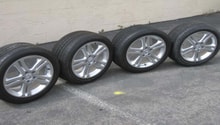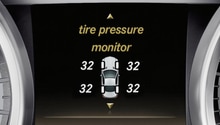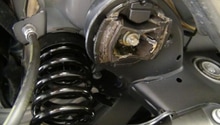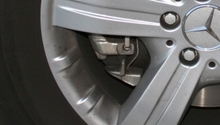Mercedes-Benz E-Class: Why Are My Tires Wearing Unevenly?
There are a couple of reasons why the tires on your Mercedes-Benz E-Class might be wearing unevenly. This article will help you diagnose and correct the problem to get you rolling smoothly once again.
This article applies to the Mercedes-Benz E-Class w211/w212 (2002-Present).
Tires that wear unevenly can cause a number of problems, including reduced tread life, a decrease in performance, annoying noises, or even the car pulling to one side. There are also a number of causes that lead to uneven wear, which include some that are easy fixes and some that are not so easy. The good news is just about anyone can complete the diagnostic in their own driveway or street with little skills. Here are a few simple measures you can take to stop your tire problem and improve the overall performance of your Mercedes-Benz E-Class.

Materials Needed
- Tire pressure gauge
- Air compressor
- Alignment kit
Step 1 – Check the air pressure in your tires
They might be improperly inflated.
As your tires rack up miles on the road, they can become under-inflated, resulting in reduced fuel economy and increased wear. This result may also occur if you've had your car recently serviced and the tires come back over-inflated. Prevent wear from improperly inflated tires by checking the air pressure in your tires every six months.
- Check the air pressure in your tires as soon as the "check tire pressure" indicator turns on.
- You can use a tire pressure gauge or the tire pressure monitoring system (TPMS) in your E-Class to check the pressure in your tires.
- If you experience a problem with your TPMS, have it inspected by your local Mercedes-Benz dealer. One of the sensors might be damaged.
- After adding more air to your tires, properly replace the plastic valve stem caps and reset your warning light.
- Always go by the manufacturer's recommended tire pressure. You can find the correct specifications in your owner's manual.

Pro Tip
Check your tires after a significant change in outside temperature, such as the shift in season from fall to winter. Tire pressure can change as the weather outside changes.
If your tires are inflated to their correct specifications, move on to the following step.
(Related Article: How to Reset Tire Pressure Monitoring System (TPMS) - MBWorld.org)
Step 2 – Check your tires for misalignment
Incorrect alignment is the most common cause of uneven tire wear.
The tires on your E-Class should not pull and drift to the right or left when driving. If they do, you will need to realign your front and rear tires. Allowing your tires to persistently pull or drift to one side can result in significant wear to the tires on that side of your vehicle.
- Drive on a flat, leveled surface.
- If you feel the vehicle is pulling to one side, the tires most likely need to be aligned.
- You might also need to have your steering wheel centered.
- Many dealers offer realignment services as part of an oil change service package. Steering wheel alignment and more advanced diagnostics will cost extra.

Pro Tip
Adjuster kits are available to consumers online; however, unless you are experienced in performing the installation, it is recommended having your local dealer adjust and align your tires for you.
If your tires are aligned, move on to the following step.
Step 3 – Check your wheels
They might be bent.
Bent wheels can affect tire wear not only on the tire mounted to that wheel, but also on the other tires. Typically, a bent wheel will cause the car to vibrate while moving.
- Follow along the bead of the tire where it follows the contour of the wheel. A bend in the wheel will be mirrored by a bend in the tire's shoulder tread as the sidewall dips to meet the wheel bend.
- If you have a bent wheel, take it to a reputable shop. They can determine if it can be fixed or if it will have to be replaced completely.
- In almost all cases, a bent wheel means that a replacement is necessary.
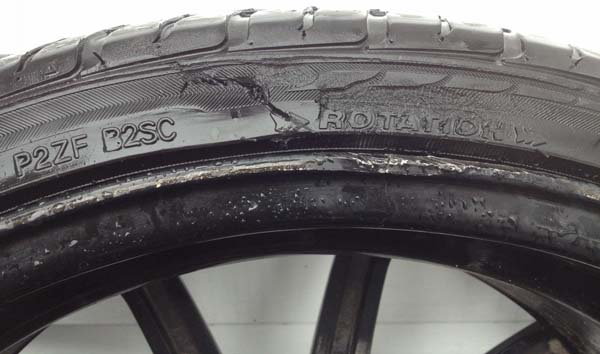
(Related Article: How to Change a Tire - MBWorld.org)
Related Discussions and Site
- E-Class w212 Rear Camber Kit - MBWorld.org
- E-Class w212 Lowered on 20s - MBWorld.org
- How to Read Tire Wear - ProCarCare.com

